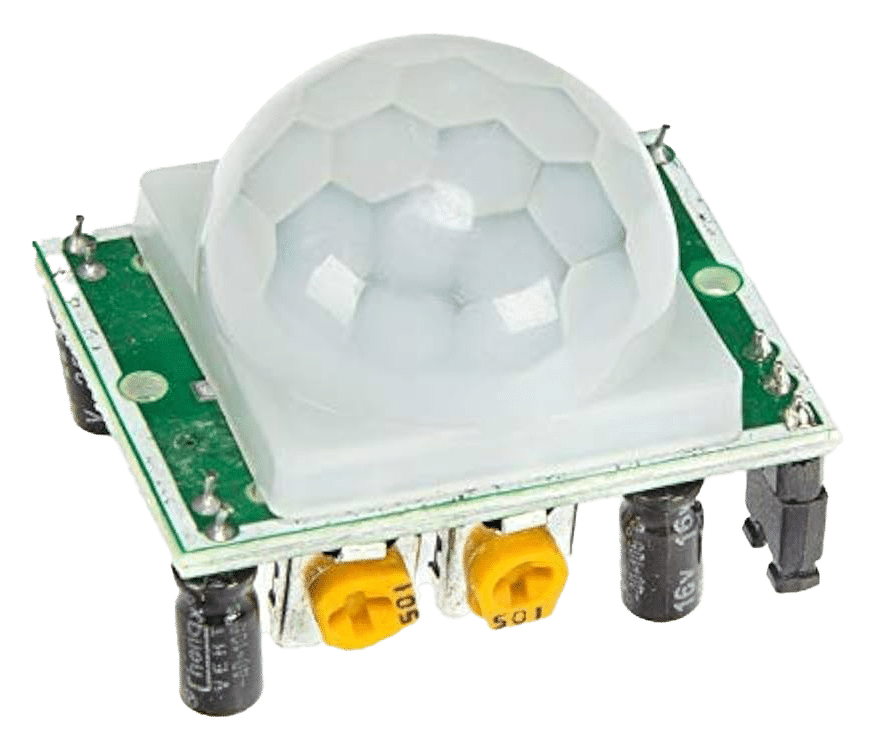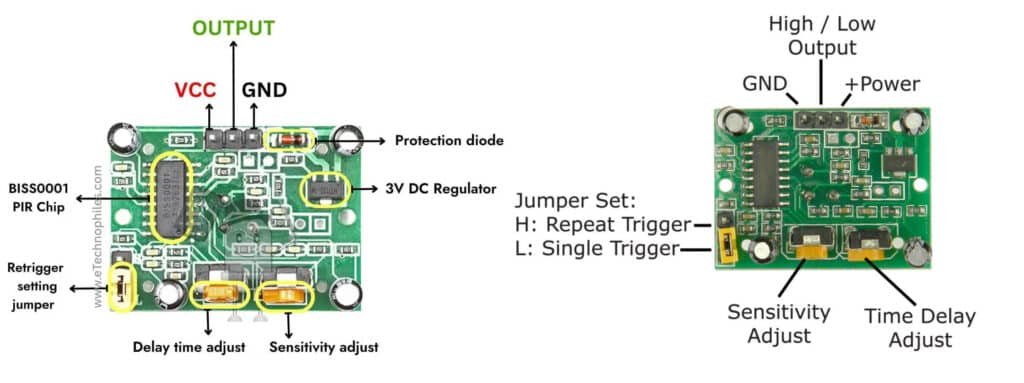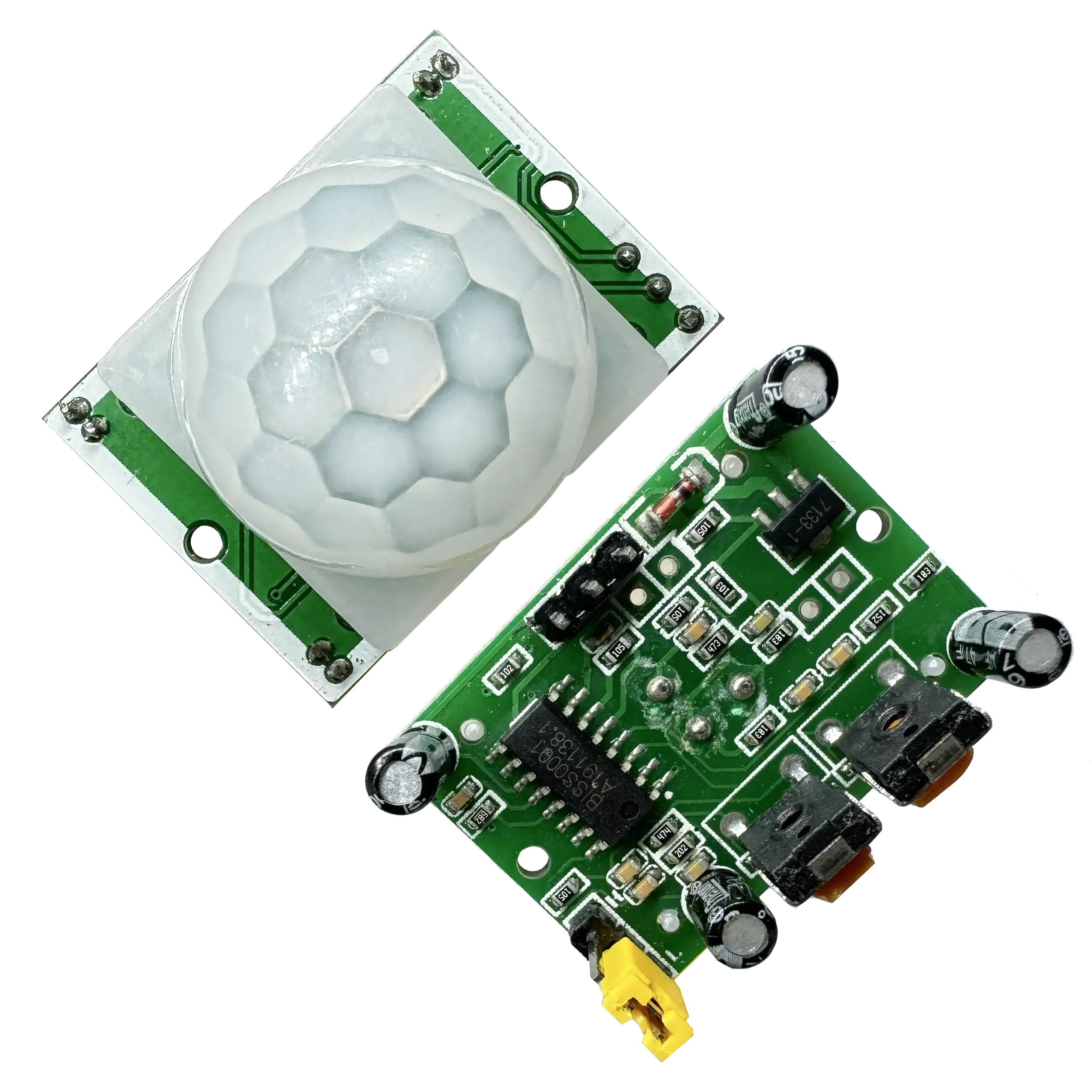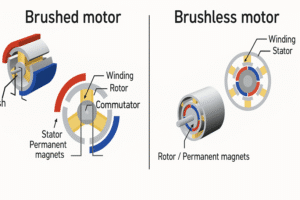Overview
The HC-SR501 Passive Infrared (PIR) Motion Sensor is more than just another electronic component — it’s the intelligent eye that gives your projects the power to sense life. This smart, energy-efficient module detects human motion by capturing changes in infrared radiation emitted by warm objects, such as the human body.
When movement occurs, the sensor’s pyroelectric elements generate a subtle electrical signal that the onboard amplifier instantly boosts. The result? A precise, real-time trigger that can activate lights, alarms, or automation systems — all without lifting a finger.
What makes the HC-SR501 truly stand out is its dual-element sensing mechanism. By analyzing the difference in infrared levels between two regions, it dramatically reduces false alarms and ensures pinpoint accuracy even in dynamic environments. Add to that its built-in sensitivity and delay-time adjustment, and you get a customizable detection system that works exactly the way you want it to.
what are PIR motion sensors ?
A PIR ( PIR = passive infrared ) motion sensor is a device that detects motion by sensing changes in infrared radiation (heat) emitted by objects, such as people or animals, within its field of view. Unlike active sensors that emit their own signal, a PIR sensor passively receives infrared energy from its surroundings. When a warm object moves across the sensor’s view, it creates a temporary change in the infrared radiation levels, triggering the sensor to detect motion, which is commonly used in security systems, automatic lighting, and energy management applications.

How PIR sensors actually work ?

Detecting Heat (Infrared Radiation):
PIR sensors contain a pyroelectric sensor made of materials sensitive to infrared radiation, which is essentially heat. All objects with a temperature above absolute zero emit infrared light.
Passive Detection:
The “Passive” in PIR means it doesn’t emit energy to detect motion; it only detects the infrared energy already present in the environment.
Differential Changes:
The sensor’s field of view is typically divided into multiple zones by a Fresnel lens. When a warm object, like a person, enters the sensor’s range, it interrupts the infrared radiation flow to the zones.
Signal Trigger:
As the person moves, the infrared radiation levels in these zones change, creating a positive differential (a change from one level to another). This change in infrared energy signals the sensor that motion has occurred.
Output:
The sensor then sends a signal to a connected system, such as a light or alarm.
Basic Info of HC-SR501
- Name: HC-SR501 PIR Motion Sensor Module
- Type/Category: Passive Infrared (PIR) Sensor Module
- Function: Detects motion based on infrared radiation changes
- Manufacturer: Widely produced by multiple vendors (generic module)
Working Principle of HC-SR501
The HC-SR501 uses a PIR (passive infrared) sensor to detect IR radiation from objects like humans or animals when a moving warm body enters its range causing a change in the infrared radiation levels, the sensor outputs a digital high signal when the motion is detected and vice versa returns to low signal when no motion is present and the frensel lens focuses IR radiation onto the PIR sensor to widen its detection angle.
Electrical characteristics of HC-SR501
Operating Voltage: DC 4.5V – 20V (Typically 5V recommended)
Current Drain: < 60uA (idle mode)
Detection Angle: ~ 120°
Detection Distance: ~ 3m to 7m (adjustable)
Output Signal: High/Low-level signal, typically 3.3V TTL
Delay Time: 2 seconds – 5 minutes (adjustable with potentiometer)
Operating Temperature: -10°C to +80°C
Circuit Diagram of HC-SR501

Applications
- Security alarm systems
- Automatic lighting control (motion-activated lights)
- Smart home automation
- Energy-saving devices (auto shutoff)
- Intruder detection
- Robotics (detecting human presence)
Advantages and Disadvantages
 Advantages
Advantages
- Low power consumption
- Easy to interface with Arduino, Raspberry Pi, etc.
- Adjustable sensitivity and delay
- Wide detection angle
- Inexpensive and widely available
 Disadvantages
Disadvantages
- Cannot detect through walls or glass
- Sensitive to heat sources (may cause false triggers near heaters, sunlight, etc.)
- Limited to detecting motion (not distance or static presence)
Note
- Needs ~30–60 seconds warm-up time after power-up before working reliably.
- Use in areas with minimal heat fluctuation (avoid direct sunlight).
- Connect a pull-down resistor on output if microcontroller input requires it (usually not necessary).
- Works best when subject moves across detection field, not directly towards it.
Datasheet Reference
Click here HC-SR501 V2 to download the Datasheet
Refer these websites as well to increase your knowledge about this amazing sensor








